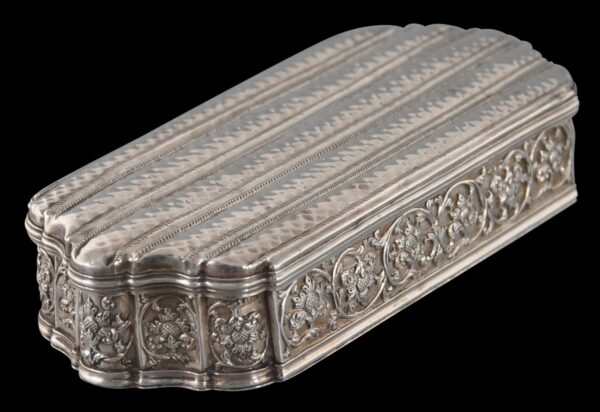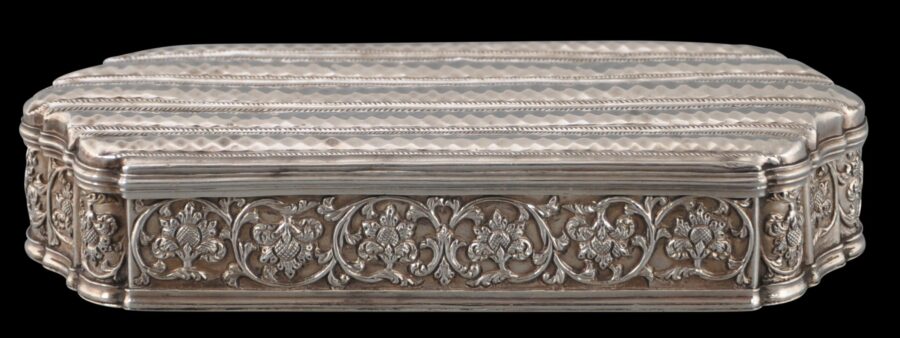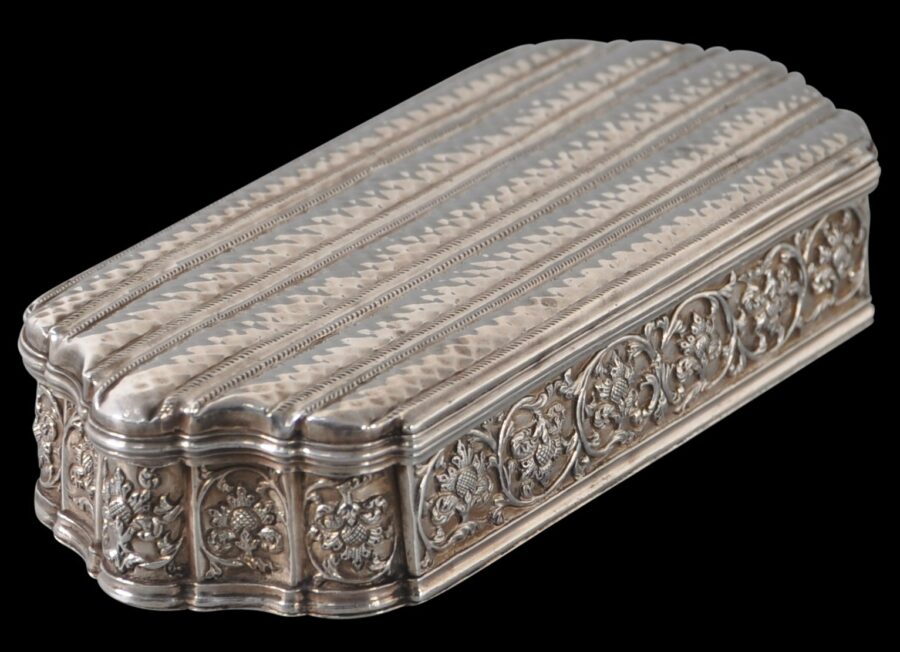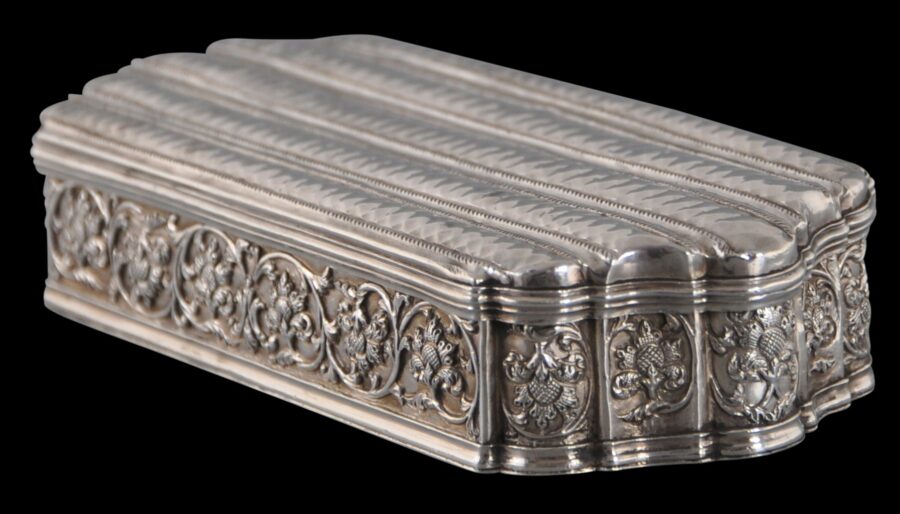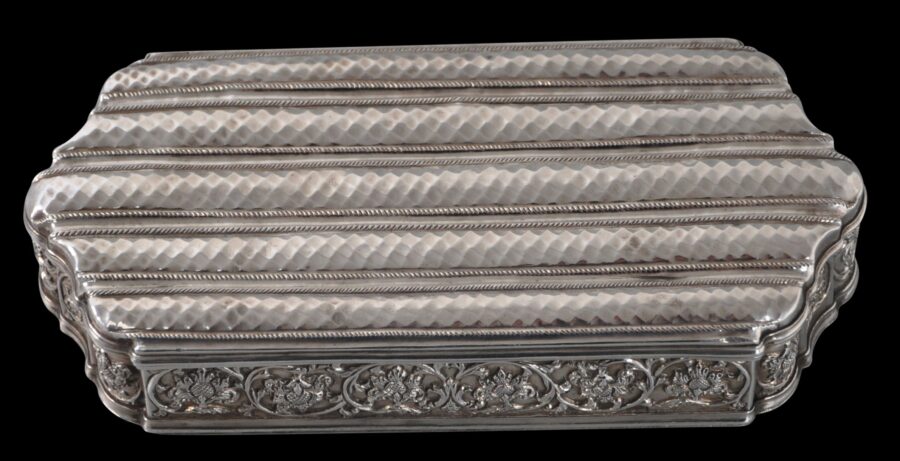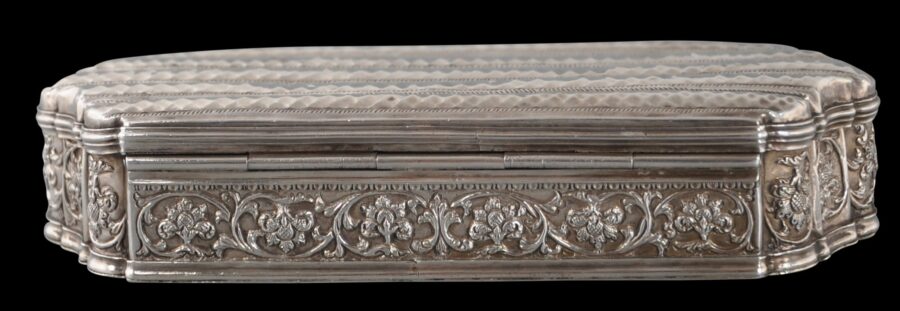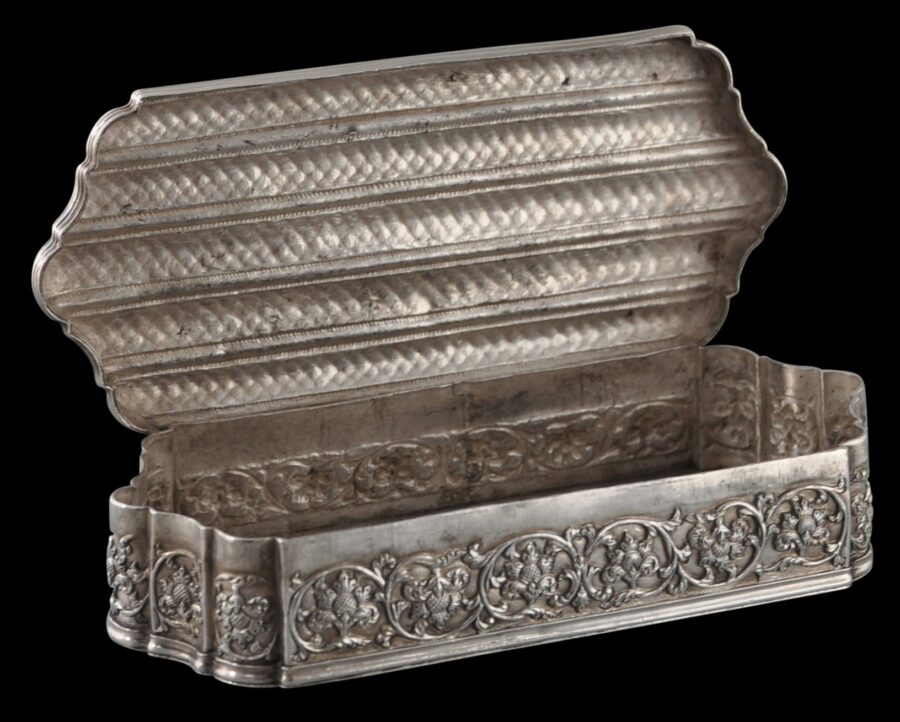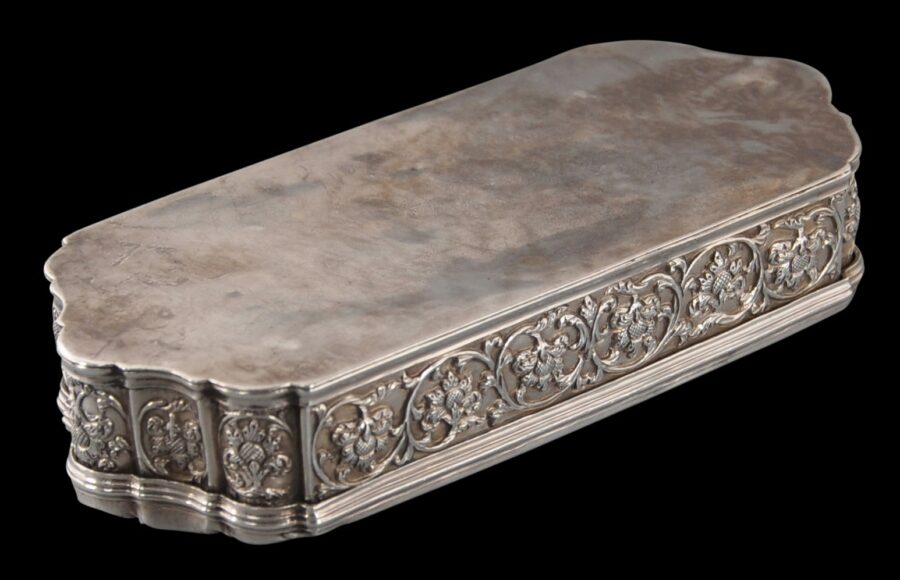This especially unusual and fine silver box with a hinged lid is from 17th-18th century Batavia. The form is based on a 17th century Dutch tobacco box and might have been intended for tobacco or betel (sirih). It is made from particularly high-grade silver.
The sides are scalloped in a pleasing way and the box is narrow and flat.
The lid is ribbed but also worked by the silversmith with an unusual patterning to emulate bamboo or reed basketwork. The sides are beautifully decorated with scrolling flowers, of a type sometimes seen on Batavian silver betel boxes and rosewater sprinklers. The National Museum of Singapore collection holds two water sprinklers catalogued as Malay but almost certainly of colonial Batavian silverwork which also share this motif. Voskuil-Groenewegen (1998, p. 75) attributes this type of work to late seventeenth century Batavia or the Coromandel Coast, but Batavia seems more likely. The motif is also evident on betel containers illustrated in Veenendaal (2014, p. 106) and a sprinkler (p. 108).
Betel, a mild social narcotic, was used widely in South and Southeast Asia. Dutch colonial administrators and their wives adopted the habit of chewing betel or sirih in the seventeenth and eighteenth century and commissioned for themselves betel sets that were similar to those used by indigenous rulers. These two cups appear to be from such a set.
The box is in excellent condition.
References
Avieropoulou Choo, A., Silver: A Guide to the Collections, National Museum Singapore, 1984.
Haags Gemeentemuseum, V.O.C. – Zilver: Zilver uit de periode van de Verenigde Oostinische Compagnie 17de en 18de eeuw, 1983.
Tchakaloff, T.N. et al, La Route des Indes – Les Indes et L’Europe: Echanges Artistiques et Heritage Commun 1650-1850, Somagy Editions d’Art, 1998.
Veenendaal, J., Asian Art and the Dutch Taste, Waanders Uitgevers Zwolle, 2014.
Voskuil-Groenewegen, S.M. et al, Zilver uit de tijd van de Verenigde Oostindische Compagnie, Waanders Uitgevers, 1998.


